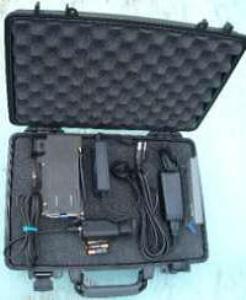Murdoch University researchers in Australia are using the imaging systems from Hood Tech on unmanned aerial vehicles to test their effectiveness in surveying marine life. The University will be comparing the cost effectiveness of using these imaging systems on UAVs versus manned vehicles.
 Snake Eyes UAV camera
Snake Eyes UAV camera
According to a report by Sacramento Bee, the imaging systems captured as many as 3,000 images per day on a two week experiment that involved tracking two humpback whales on commercial air space.
The Insitu Pacific managing director, Andrew Duggan, pointed out that the challenge of the mission for a manned aircraft was to fly at a low altitude for a long duration. In such situations UAVs proved more effective when compared to manned aircrafts. He explained that the Scan eagle UAV was much safer to deploy on such missions and was environment friendly as well. The amount of fuel used by UAVs carrying Hood Tech imaging systems was much lesser when compared to manned aircrafts.
The imaging systems from Hood tech have been used on airborne surveillance and reconnaissance missions across the world from the year 1993. Prior to testing the imaging system on whales, large fish species were monitored by commercial operators using the imaging system. Hood Technology Vision systems has been manufacturing imaging and video processing systems, which can be used on unmanned and manned systems, boats, land vehicles and also stationary mounts. These imaging systems have completed almost 500,000 hours of operation working under different environmental conditions.